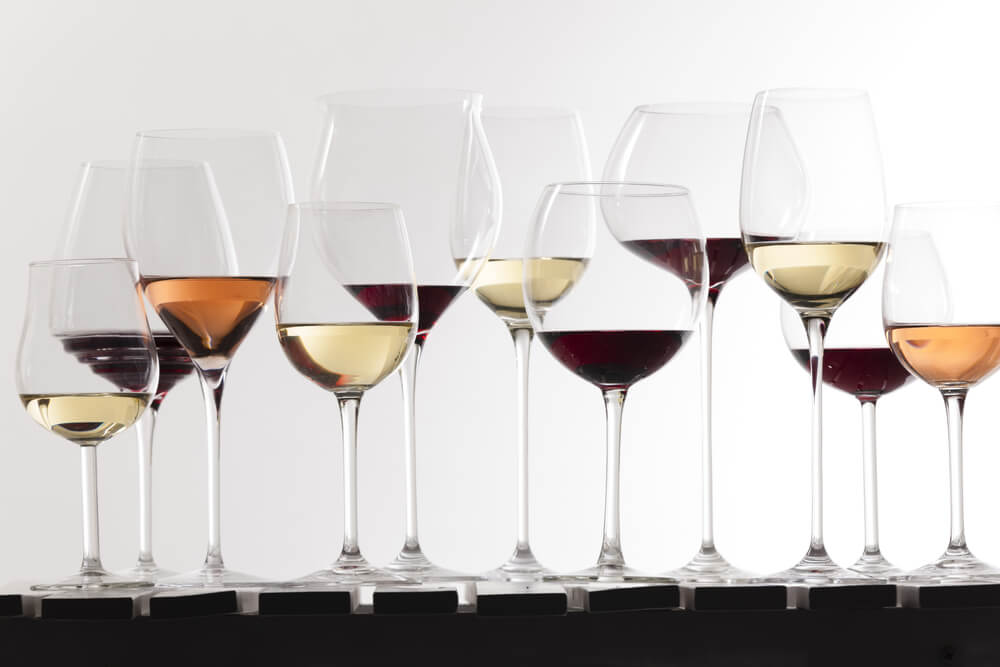First, The Basics
It’s always important that you do not fill the glass to the very top. After all: You can always pour more wine later. Room at the top of the glass allows the extra needed space for the wine aromas to properly circulate where they can be better enjoyed. Remember: Aroma always equals flavor. And you might also be surprised to know that a stemmed glass, although aesthetically pleasing, isn't generally necessary. Often, it’s more about the shape of the vessel, rather than the structure of an added stem, that matters most. However, when drinking chilled wine, the stem does decrease the holder’s hand heat from unnecessarily warming the beverage. In addition, a stem allows the user to more easily swirl the drink. So, stems — besides being beautiful — do serve a purpose. Beyond the basics, there are also “universal glasses” that can be purchased almost everywhere. This is especially helpful if your cupboard space is limited, or you just prefer simplifying such details. These glasses offer what the manufacturers claim is a shape that is conducive to all types of wines. They are best described as coned, or tulip-shaped glasses that arguably work well with all wine types. However, if you have room to store a selection of different glass shapes, many believe the subtle wine drinking benefits are worth the extra investment. And then there are the glass shape types within each wine subtype. For example: Even among wine colors — whether red, white or rose — the glass shapes will vary. Why? Besides color, it also matters if you are drinking a full-bodied or light-bodied wine. Yes, the nuances make a difference in wine glass selection, too.Here are a few wine glass specifics:
Red Wine Glasses
In order to reduce the bitter taste of red wine tannins, it’s wise to choose a wider mouthed glass than one would use for white wine. Generally speaking: A wider bowl keeps the aromas farther from the nose and allows for a smoother red wine-drinking experience. In addition, the wider opening helps with oxidation. Many believe this improves the flavor because the oxygen mellows out the otherwise intense flavors of red wine complexity. For a full-bodied red, like a cabernet sauvignon, try a larger vessel — often called a Bordeaux glass — for a more pleasant flavor. For a medium-bodied red — like a syrah — a standard red wine glass is the perfect ticket. For a red wine with floral tones — like a pinot noir — try a Bourgogne glass, which has a large bowl for carefully capturing all those beautiful aromas.
White Wine Glasses
When choosing a white wine glass, note that smaller bowls are generally desirable. This shape allows the wine to remain cooler, as well as preserve floral aromas — since the bowl is closer to the nose while sipping. It also limits oxidation, which could negatively impact the nuances of a more subtle wine. In addition: A stemmed glass works well to keep the white wine cool from the user’s warm touch. If you have a fuller-bodied white wine — like an oak-aged chardonnay — the mouth should be slightly wider. This will offer a creamier texture to the wine drinking experience by contributing to the oxidation process.Rose Wine Glasses
Here’s where the stem, or no stem, a theory also comes into play. Many believe that the stem allows the rose to remain cool from the heat of the user's hand. So, because the temperature is a factor here, you might want to consider a stemmed glass for rose, too. A rose glass generally has a flared lip, allowing the wine to better reach your sweet taste buds first. This is especially a great glass when enjoying a younger rose, which is not quite as sweet as its more mature rose counterpart.






